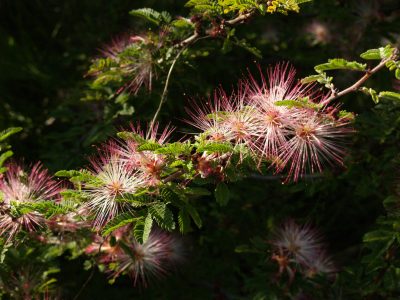When is the best time to plant a tree?
Autumn and early winter is absolutely the best time to plant a tree. Why? With shorter day lengths, cooler temperatures and maybe even a little rainfall, autumn has everything that a tree needs to keep transplant stress to a minimum.
Most of the trees that we plant here in Central Texas are deciduous, so they’ll soon be dropping their leaves and going dormant to avoid the damaging cold of winter. During the winter with no growth happening above ground, trees are free to focus their resources below ground on their roots. Even live oaks and other semi-evergreen to evergreen trees will establish much more quickly in this time of leaf growth dormancy.
If planted in the fall, trees have almost half a year to establish their root systems before the temperatures get overbearingly hot and they start to need more water to survive. In order to take up water, plants must release water into the environment through a process called transpiration.
During the heat of summer the air is so hot and dry that it practically sucks the water right out of the leaves, which is why during extremely hot weather (like in 2011) many trees drop their leaves and go dormant.
Dormancy is simply a plant’s way of avoiding stress. It takes a lot of water to support a canopy full of leaves, and if there isn’t enough water, which is a pretty stressful situation, a good strategy is to drop those leaves and go to sleep until the stress passes.
So if you’ve ever planted a tree during the spring, especially in the late spring or if summer’s arrived early, you may have noticed that your tree immediately dropped all of its leaves and struggled to survive all summer long. But I bet once the temperatures began to drop and the sun became less intense a few months later, new leaves appeared and the tree took advantage of that short autumn window to get just a little bit of growth under its belt before winter and its true dormant season arrived.
Also, the lower temperature and higher relative humidity of fall help to keep trees better hydrated, so planting during autumn gives trees more time to acclimate to their new environment, your yard, and get established.

 Christine Hausmann
Christine Hausmann Pete Hausmann
Pete Hausmann Meredith O’Reilly
Meredith O’Reilly Daphne Richards
Daphne Richards
 John Dromgoole
John Dromgoole